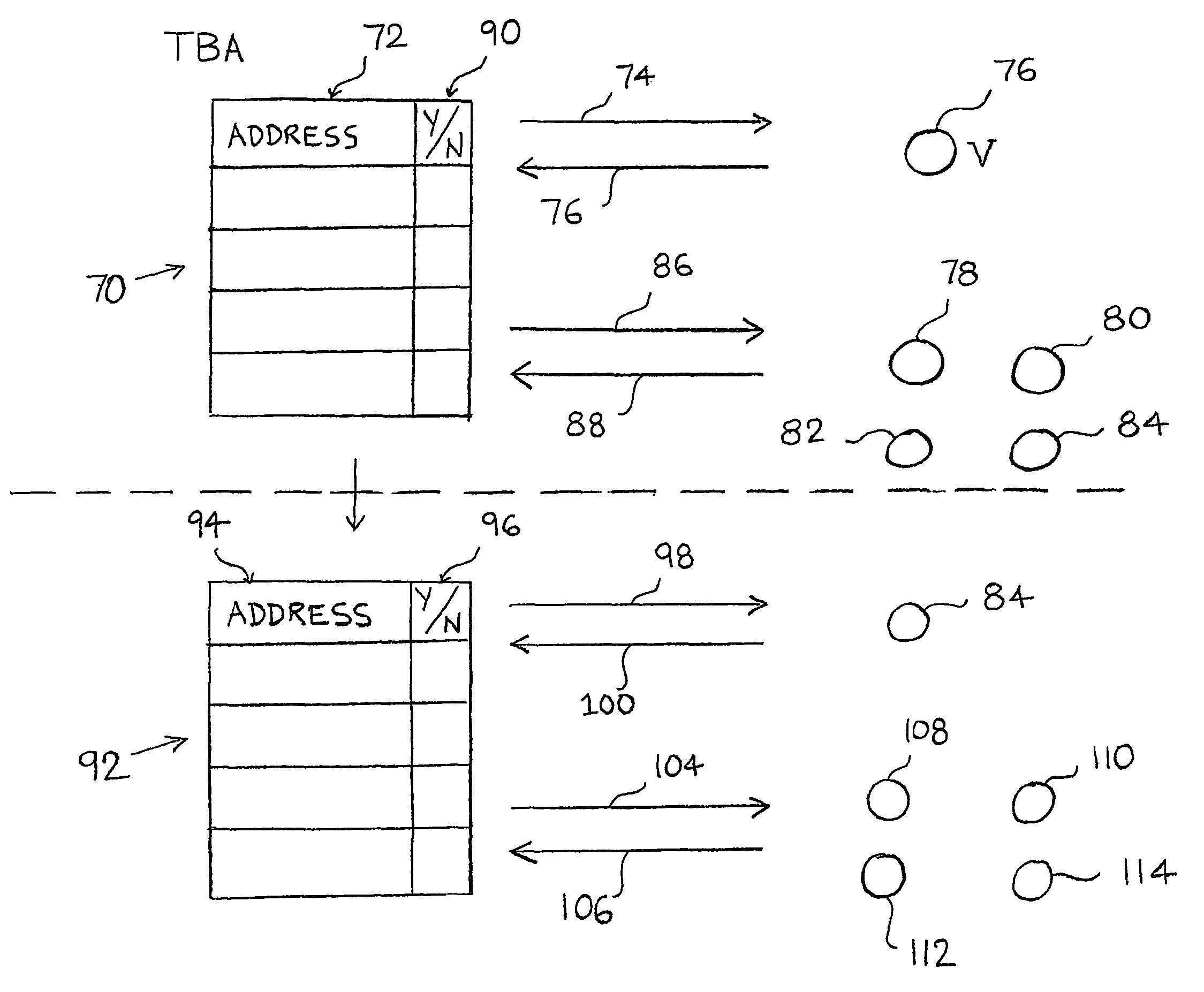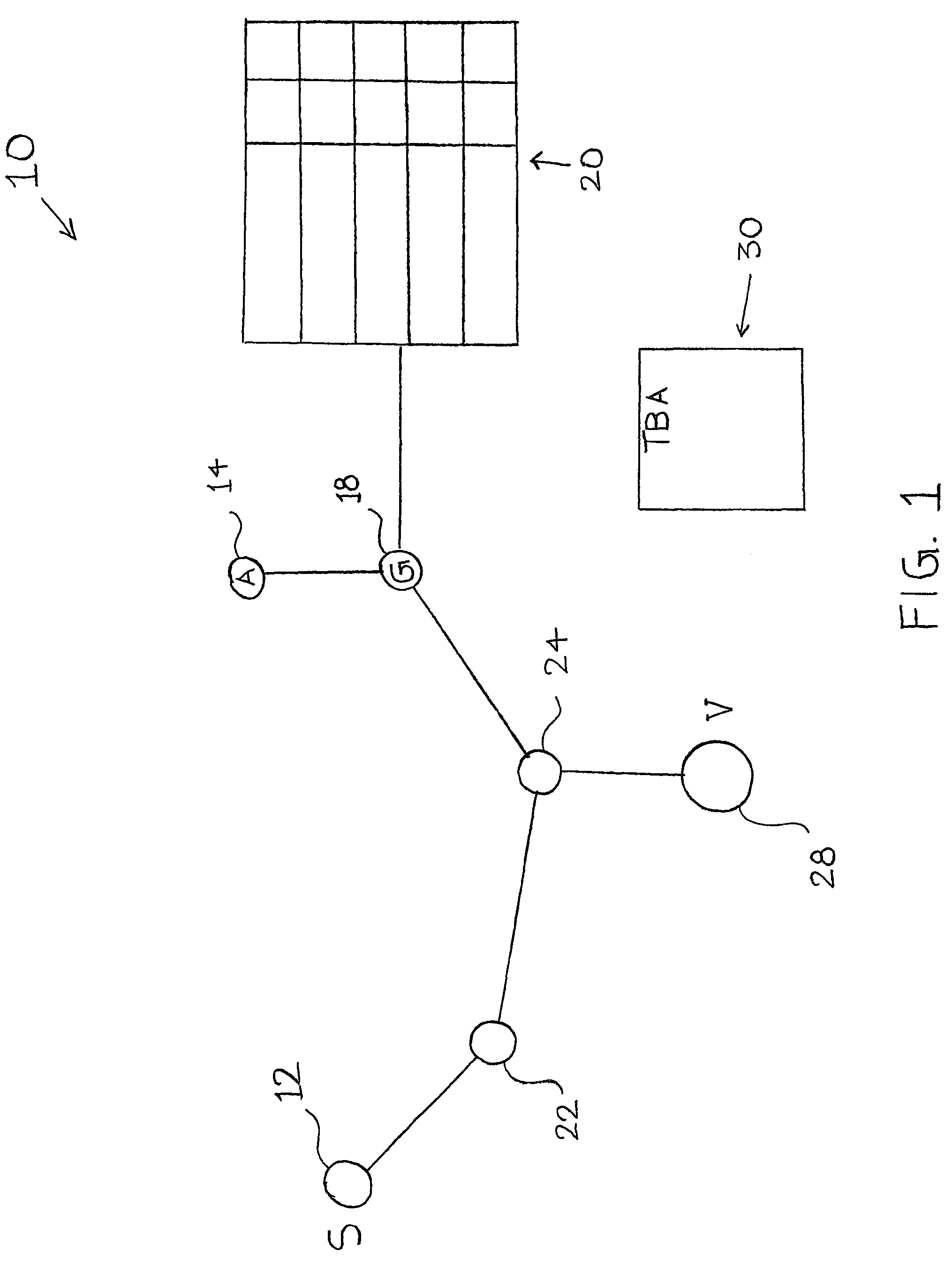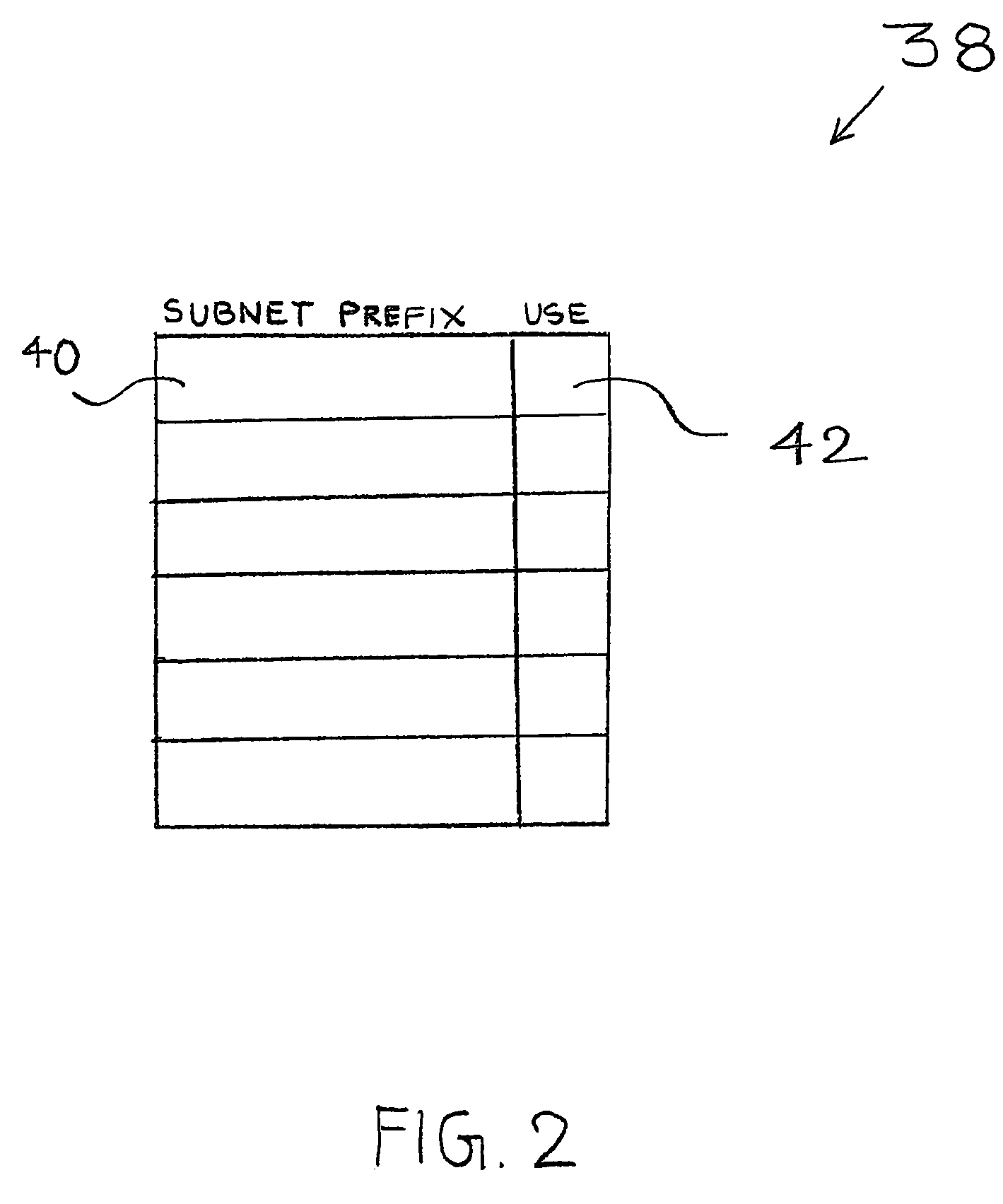Method for source-spoofed IP packet traceback
a data packet and source address technology, applied in the field of sourcespoofed data packet traceback, can solve the problems of not being used often, insufficient to guarantee the validity of ip source addresses in packets, and being virtually impossible to implement such a feature in routers in the core of the network,
- Summary
- Abstract
- Description
- Claims
- Application Information
AI Technical Summary
Benefits of technology
Problems solved by technology
Method used
Image
Examples
first embodiment
[0064]In a first embodiment in accordance with FIG. 3, traceback agent 64 commences a query based on the detection of an attack, such as in a denial of service attack. In the present embodiment, traceback agent 64 collects and compiles investigative data to the determine the origin of the attack. Traceback agent 64 begins by asking the surrounding nodes of victim 62, if the surrounding node had passed the packet. In simple example, this query would only be directed to network node 60. When queried, network node 60 executes a read lookup on the spoofed source address in the sub-block of address space. Network node 60 returns a value indicative of whether the spoofed source packet had been passed.
[0065]Traceback agent 64 subsequently requests information about network node 60's nearest neighbors, if network node 60 returns a value indicating that the spoofed source packet had been passed. The nearest neighbor information received by the traceback agent 64 is used for iterative queryin...
second embodiment
[0070]The second embodiment described here includes a timestamp with the data. This timestamp would typically indicate the period over which the data was collected (such as a specific 15-minute interval of a single day). It is used primarily for historical tracebacks when an attack packet needs to be traced hours or days after the actual attack, and is used to determine which set of “use” bits should be queried in an archive at the NOC corresponding to the time period of the attack.
[0071]In one or more embodiments, network node 60 has a plurality of network interfaces (e.g., line cards) 55, 59. Network interfaces can be used to record the source path of an incoming packet into network node 60. For example, a packet traveling from network node 54 to victim 62 is processed by interface 59. Network node 60 can record this information in the routing table 50. This provides information about the network link over which a packet traveled.
[0072]Turning to FIG. 4, FIG. 4 shows the query pro...
PUM
 Login to View More
Login to View More Abstract
Description
Claims
Application Information
 Login to View More
Login to View More - R&D
- Intellectual Property
- Life Sciences
- Materials
- Tech Scout
- Unparalleled Data Quality
- Higher Quality Content
- 60% Fewer Hallucinations
Browse by: Latest US Patents, China's latest patents, Technical Efficacy Thesaurus, Application Domain, Technology Topic, Popular Technical Reports.
© 2025 PatSnap. All rights reserved.Legal|Privacy policy|Modern Slavery Act Transparency Statement|Sitemap|About US| Contact US: help@patsnap.com



